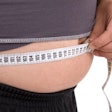
With the oral-systemic health link now well recognized, this is the time to help patients understand what they need to do to control bacteria at home. Unless patients understand the "how to" portion of their home care, our efforts will continue to show limited results,and periodontal issues will still be a barrier to overall health.
 Carrie Ibbetson, RDH.
Carrie Ibbetson, RDH.As bacteria become invasive after accumulating for only a week, unless we are seeing our hygiene patients biweekly for preventive appointments, we have to help them understand the tools that we are recommending they use.
I have been told in the past that "no one can brush their teeth at home like a dental hygienist," but my thoughts are the exact opposite. The tools and products we as practitioners use are not magic wands; it is simply the fact that we have had countless hours practicing how to use them correctly.
To get patients on board with their home care, you need to address the situation so that patients don't feel like you are shaming them for what they are not doing, or for what they should be doing more frequently.
Take yourself to a time in your life (outside of the dental walls) when someone has told you what you "should" be doing. Or, think of a time when you were made to feel inadequate about efforts about something that you did. If you felt ashamed or embarrassed, did you make the change that was suggested?
No one likes to be told what to do if it comes from a place of judgment. But we in dentistry are so used to treating disease, we jump to solutions too quickly and don't allow the patient to come to their own conclusion, or practice the techniques we recommend.
Below are five techniques for getting your patients on board with their home care:
- After you ask for permission (which will help break down any communication barriers) and have taken a look in their mouth, sit them up a bit and hand them a mirror. Find an area in their mouth where the tooth is clean and gum tissue is pink and healthy. Dry the tooth and gum, and show them that the clean area is shiny and the tissue is pink because it has good oxygen flow. Overemphasize how great of a job they are doing in that area -- make them feel good and sufficient.
- Find an area that is the exact opposite from what you have shown them first, and dry that area as well. Show them the plaque or calculus that has built up, and the inflammation that surrounds it. Correlate the inflammation with the bacteria that is there and the lack of stimulation when brushing. Go back to the healthy area and show them the difference, and let them feel the roughness with their tongue. The tongue is a powerful tool when it comes to clean teeth and healthy gums.
- Disclose them if they will let you. Ask them if you can stain their plaque so that they can see it better. If you do disclose, first use a lubricant on their lips so that it does not stain. You do not have to disclose the entire mouth if they are resistant to it. If you partially disclose or choose not to disclose, offer them something to take home. These days, there are disclosing swabs that look like Q-tips. These make it much less messy than chewable disks.
- Once you have identified their plaque and inflammation, brush that area with a toothbrush and let them feel how it feels. Ask them if what you are doing feels different from what they are doing at home. Help them understand pressure, stroke direction, bristle placement, etc. Chances are, they are focusing on the teeth and need to feel what it is like to engage the gumline and interproximal areas more effectively. Show them how the tissues go from red to white as they are brushed, and explain how that is allowing fresh, oxygen-rich blood to the gums to help with health.
- If time allows, brush their entire mouth with that same toothbrush (no toothpaste required; you want them to see what you are doing). Keep reminding them how well they are doing in the areas that they are getting to, and how just small changes will make a big difference in their overall health.
The old saying "you catch more bees with honey" rings true. By becoming their ally and their coach, you will help your patients become aware of their oral health and possibly change the way they view their relationship with you. It takes a bit of practice to do all this before you scale, but within an appointment or two you will start to notice big differences in the work you have to do because they are taking care of the daily work more effectively!
Carrie Ibbetson is a registered dental hygienist and oral health coach in Southern California. She founded and runs the sites NaturalGumption.com and OralHealthCoaching.com, and has been featured on Lifehack.org and KIWI.com. For more information about Ms. Ibbetson and Natural Gumption, please visit her sites.
The comments and observations expressed herein do not necessarily reflect the opinions of DrBicuspid.com, nor should they be construed as an endorsement or admonishment of any particular idea, vendor, or organization.



















